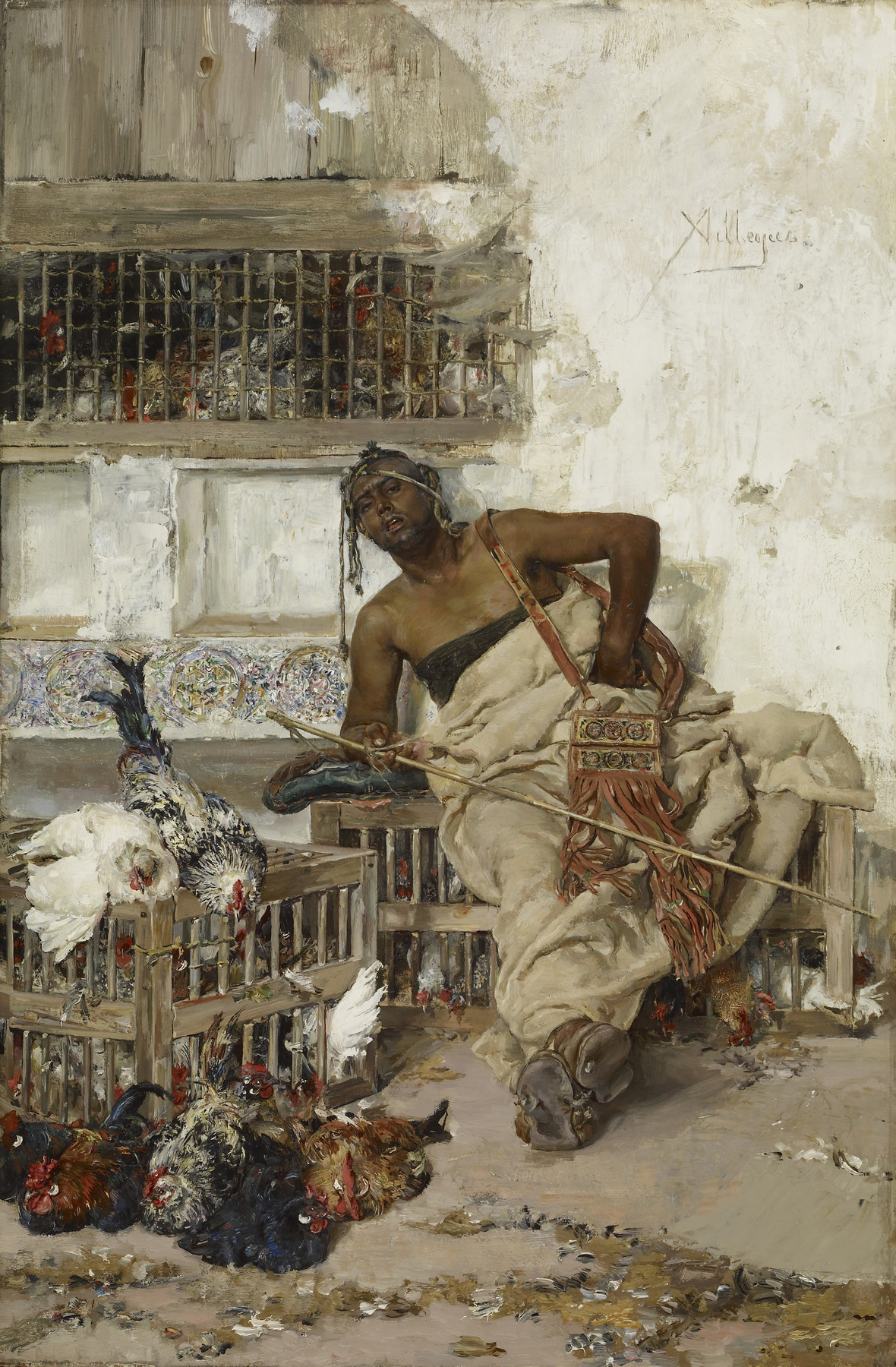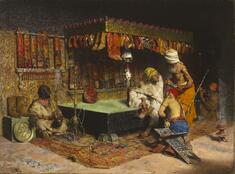Poultry Market, Tangiers
(18th and 19th Centuries )
Nineteenth-century North Americans and Northern Europeans viewed southern Spain as “exotic” and racially different from the rest of Europe due to its proximity to, and long history of exchange with, North Africa. These artists often created work that reflected the audience’s prejudices about people from cities like Tangiers, where this scene is set. A typical gambit in this genre of painting was to suggest cultural decline by depicting workers in moments of idleness and decaying architecture. Here, the figure, presumably a merchant at the market in the work’s title, rests by the chickens he has come to sell, in front of the seemingly partly effaced tiles of a building. These pictorial details subtly reinforced European and North American ideas of white racial superiority and what were perceived as the benefits of European imperialism.
Inscription
Provenance
Provenance (from the French provenir, 'to come from/forth') is the chronology of the ownership, custody, or location of a historical object. Learn more about provenance at the Walters.
Everard Sale, 1881 [as "Marchand de Volailles au Maroc"]; William Schaus, Tableaux Modernes, New York [date and mode of acquisition unknown] [from label on reverse] (?); William T. Walters, Baltimore, between 1881 and 1884 [mode of acquisition unknown]; Henry Walters, Baltimore, 1894, by inheritance; Walters Art Museum, 1931, by bequest.
Exhibitions
| 2018-2021 | Boldini and his Circle. The Walters Art Museum, Baltimore. |
| 1970 | Fortuny and His Circle. The Walters Art Gallery, Baltimore. |
Conservation
| Date | Description | Narrative |
|---|---|---|
| 6/12/1951 | Treatment | coated; other |
| 10/4/1983 | Treatment | cleaned |
| 11/21/1983 | Treatment | cleaned; other; loss compensation; coated |
Measurements
H: 20 15/16 × W: 13 7/8 in. (53.2 × 35.2 cm); Framed H: 32 11/16 × W: 25 3/8 × D: 4 5/8 in. (83 × 64.5 × 11.8 cm)
Credit Line
Acquired by William T. Walters, 1881-1884
Location in Museum
Not on view
Accession Number
In libraries, galleries, museums, and archives, an accession number is a unique identifier assigned to each object in the collection.
In libraries, galleries, museums, and archives, an accession number is a unique identifier assigned to each object in the collection.
37.107



